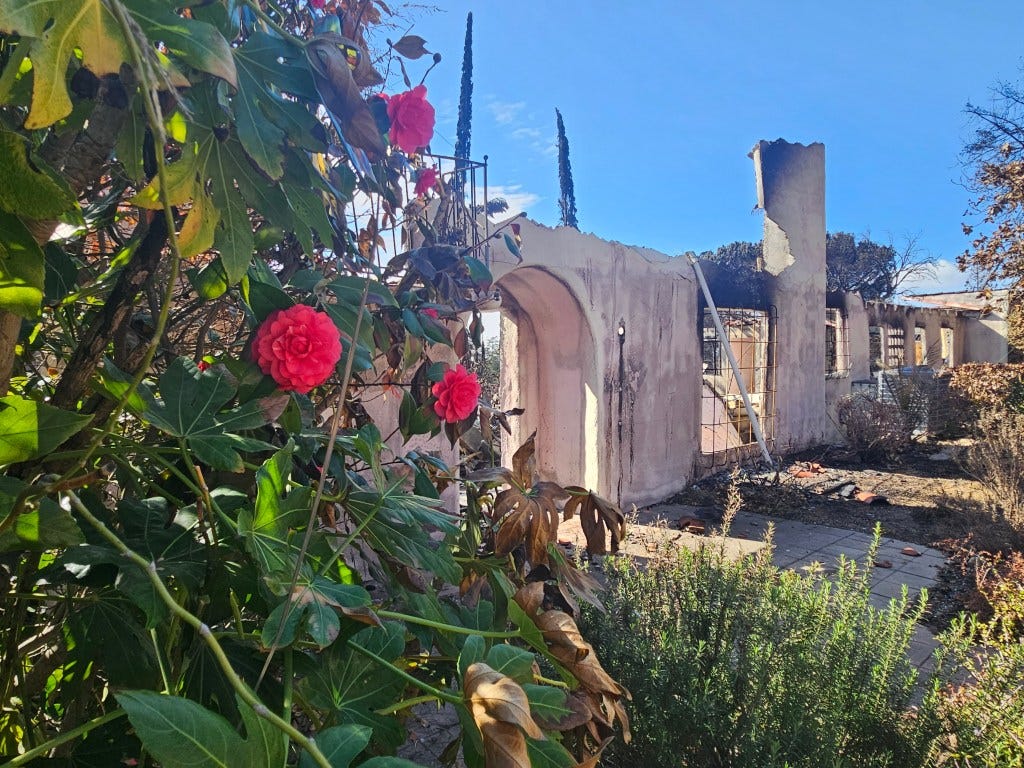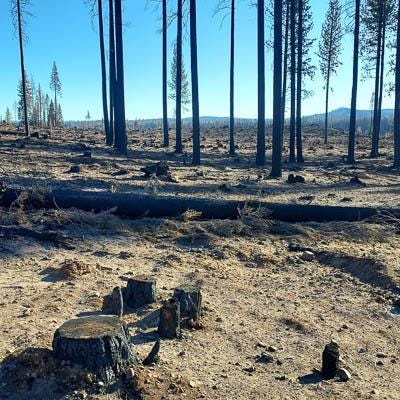
The recent June 18th editorial by representatives of the Nature Conservancy “Oregonians deserve a smarter approach to wildfires: Both suppression and risk reduction are necessary,” was based upon flawed assumptions about wildfire.
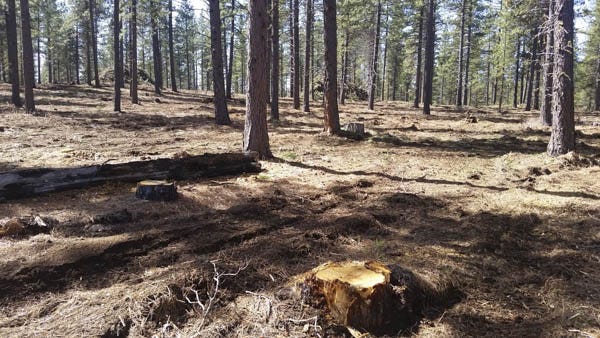
It is worth noting that TNC has a conflict of interest since it receives significant funding from the federal government to promote logging and prescribe burns.
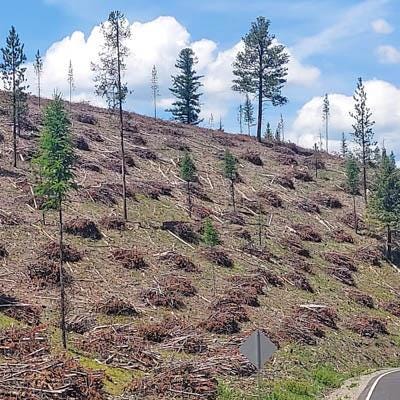
The commentary advocates more active forest management, such as logging and prescribed burning, to reduce large wildfires. Yet a growing body of evidence suggests that logging and prescribed burning increase fire hazard.
There are three significant problems with their perspective. The first is the idea that frequent low-severity wildfires historically reduced large blazes.
The vast majority of all plant communities in the West were characterized by long fire rotations, often decades to hundreds of years in length. This includes sagebrush, chaparral, lodgepole pine, white pine, larch, fir, cedar, aspen, and nearly all the major plant communities in the West. There is no abnormal “fuel buildup” in these ecosystems.
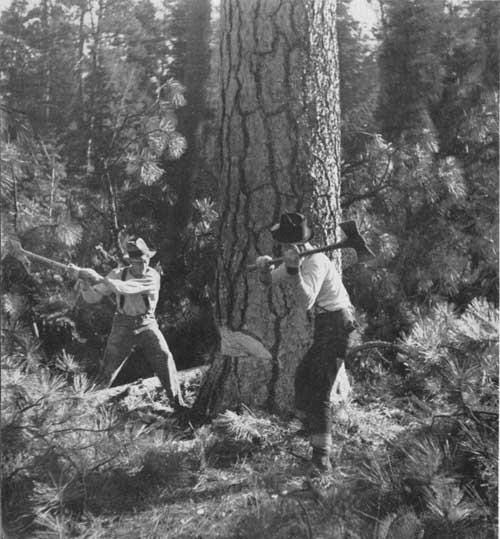
A second flawed premise is that dry forests were open and park-like before modern fire suppression due to tribal burning. Numerous studies show that such burning was localized and had little landscape influence.
However, climate/weather, not fuels, controls all large wildfires. And our climate is warming due to human carbon emissions. Wildfires are increasing, but not as a consequence of abnormal fuels.
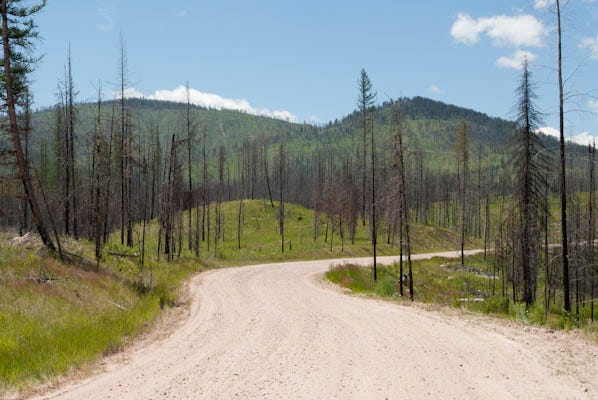
A further misnomer is that chainsaws and other management practices promote a healthy forest ecosystem.

The idea that our forests are unhealthy is a myth promoted by the timber industry and forestry schools, which see any natural mortality from wildfire, insects, drought, or other factors as a sign of forests in distress. This perspective is analogous to seeing wolves or mountain lion predation as an indication of “unhealthy” deer herds.
Indeed, for TNC, chainsaw medicine is the way to sustain a healthy forest. It’s a failure to see the forest through the trees.
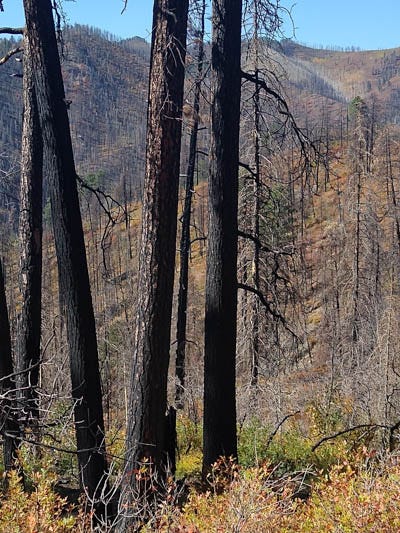
Ecologically speaking, more species depend on dead trees than live trees. More mushrooms, lichens, wildflowers, bees, birds, fish, and large mammals are found in the snag forests, resulting from natural processes like wildfire. Many wildlife and plants live in a “mortal” fear of green trees. Snags are gifts to the forest ecosystem.
Instead, TNC and most agencies advocate logging the forest to “restore” health. The problem with chainsaw medicine is that it is contrary to evolution. The selective influence of wildfire, drought, insects, and disease increases the health and resistance of forest ecosystems. Chainsaws degrade our forest.
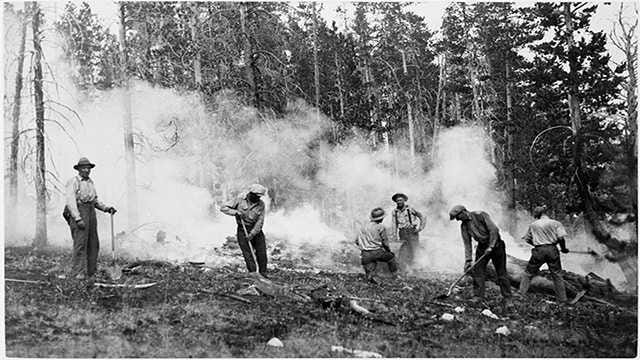
TNC suggests “a hundred years” of fire suppression has led to “unhealthy” forests with dense tree stands. Again, this ignores the reality. Climate/weather is the overwhelming influence on fire activity.

Massive wildfires around the West occurred in the early 1900s under dry, warm conditions. The 1910 Big Burn in Idaho and Montana charred 3.5 million acres. In the 1920s, as the Dust Bowl drought was having its influence, as much as 50 million acres burned annually across the West.
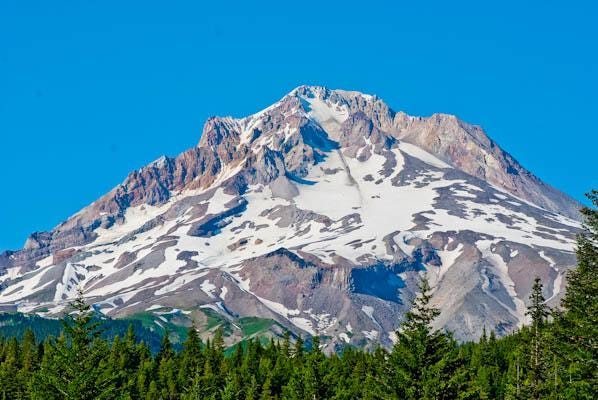
Then, in the 1940s-1980s, the climate became wet and cold. Glaciers began to expand on the mountain peaks of the West. What happens to fires when it’s cool and damp? You get fewer ignitions. And no fires don’t spread well and stay small. But in typical human arrogance, we take credit for “suppressing” fires. In truth, nature was good at suppressing fires under those climate conditions.
Then, in the late 1980s, the influence of human carbon emissions started to change the fire regime. Human carbon emissions are the primary factor in large wildfires, not fire suppression.
Even today, when TNC and others suggest there is too much “fuel,” most fires burn a few acres at most. Depending on the specific study, 97-99% of all fires burn less than a hundred acres, and most self-extinguish. Only a very few burns, usually less than 0.1% of all wildfires, grow into large blazes.
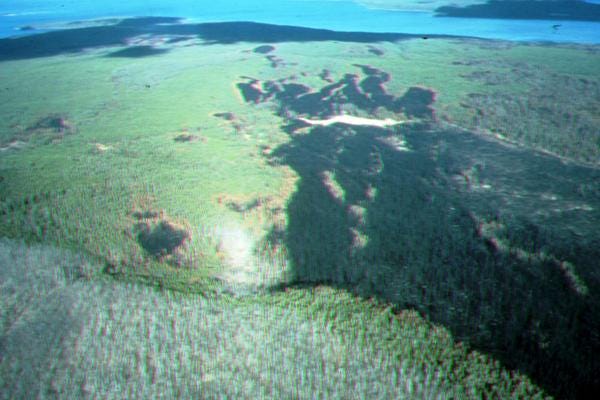
Why? To create a large fire, you need specific climate/weather conditions of extensive drought, high temperatures, low humidity, and, most critically, high winds. Under such extreme fire weather conditions, no forest treatments work to preclude blazes.
Under such conditions, embers are blown over, through, and around logging and prescribed burn projects.
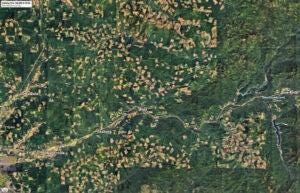
And unless we do something about carbon emissions, all the chainsaw medicine in the world will not preclude large blazes. In Oregon, logging contributes more carbon emissions by far than wildfire, and even transportation.
These “active management” proposals cost us billions of dollars and are ineffective. Beyond reducing carbon emissions, hardening homes is the only solution proven to reduce home losses from wildfires burning under extreme fire weather conditions. We should invest in community hardening efforts rather than degrading the forest ecosystem with chainsaw medicine.



